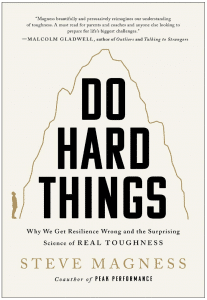How To Be Brave.
When you face the wave, do you feel fear, or do you feel brave?
Fear is the human response that keeps us alive. It is also the emotion that holds us back from achieving great things. When trying something new, it is common for fear to trickle in. This is our brain’s way of protecting us. When we feel it, we may not realize it is fear. It can show up as nerves, anger, hesitation or tentativeness, a need to be physical (i.e. punching a wall), or we might even get a little teary.
If you are standing on the beach and a large wave is coming at you, the most effective thing to do is to dive through it. To dive through the wave, we must be brave. If we’re scared, and try to withstand the wave by turning sideways or running away from it, we will get knocked down and rolled. Splutter splutter.
So how do we get practical about finding bravery?
Knowing the difference between a risk and a hazard is a useful place to start:
- A Risk is defined as the challenges and uncertainties within the environment that we can recognize and learn to manage by choosing to encounter them while determining our own limits. In our wave example, I can choose which beach to step onto. I can avoid standing in the water on Peahi Jaws on the north shore of Maui looking out at the sunset. This lovely spot often sees 60 foot waves. I know I never want to dive through a 60 foot wave.
- A Hazard is a danger in the environment that could endanger you and is beyond your capacity to recognize. This could be a strong current that all the locals know about, but you can’t see from the shore.
- Now what? Choose your level of risk. Ask the locals for information about potential hazards. Take a deep breath and JUST DO IT.
What can you do to help your team overcome fear and find their bravery?
- Let them know if there are any hazards that they cannot see. i.e. That customer you know is a real nightmare to deal with, so not the customer to try and “team with”.
- Provide them with consistent and timely feedback so they feel safe and know where they stand. You want them to know that you know them. This helps them trust your encouragement.
- Leverage their strengths. Know who is the best swimmer, and who is the best at climbing trees. Put them in the right spot, tell them why and then encourage them to find big waves and climb higher.
- And finally – model it for your team. Be aware of that fine little difference between being brave vs. being afraid. Know your strengths so you can choose the right level of risk. Ask someone you trust if there are hazards to be aware of that you can’t see. Done all that and still feeling a little twitchy? Find a friend to talk it out with. You might just need to practice diving through the smaller waves first.

This is a good read. His premise is that real toughness is found in navigating discomfort to make the best decision you can.
Bravery is not the absence of fear, but the ability to act in spite of it.
The journey to bravery is a personal and ever-evolving one. It’s about acknowledging our fears, understanding the difference between risks and hazards, and choosing to face them head-on. Whether it’s diving through a wave or taking on a challenging project at work, it’s about stepping into the unknown, equipped with knowledge and the support of those around us. By consistently practicing bravery in small steps, like discussing our fears with a friend or tackling smaller challenges first, we build the resilience and confidence to face larger ones.
It’s about doing hard things, because they are worth it. This is how we build our confidence and strive for more. As we continue to push out of our comfort zones and embrace risks, we not only become braver individuals but also inspire those around us to find their own courage. And as leaders, we are always being watched by those around us. So let’s not just dream about conquering our fears. Get out there and do the work and break it down. Identify the hazards, find the right level of risk to start with, and give it a try. If it works out, great – rinse and repeat. If it doesn’t, take a step back, reflect. What did you discover? I bet you there was something in trying that made it worthwhile. Really 🙂